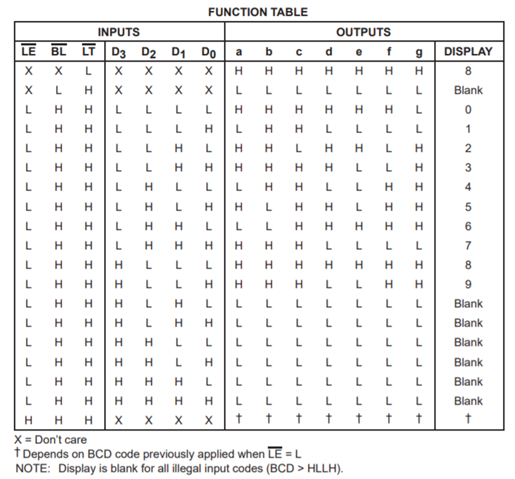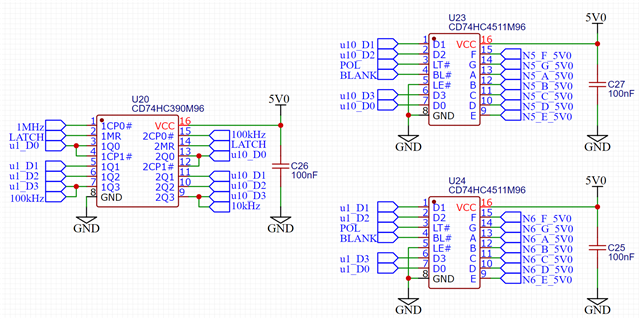Other Parts Discussed in Thread: CD74HC390, CD74HC4067, CD4055B, CD4056B, CD74HC4543
On the first page of the datasheet, the display figure below the pinout implies that segment 'a' is enabled when BCD = 6, and similarly segment 'd' when BCD = 9.

However, the function table contradicts this. Having tested the components I have with me, the function table is correct, and the overview on the first page is wrong.

Is there an equivalent part that does have these tails on digits 6 and 9, similar to the choice between LS47 and LS247 parts?
Thanks,
Phil



